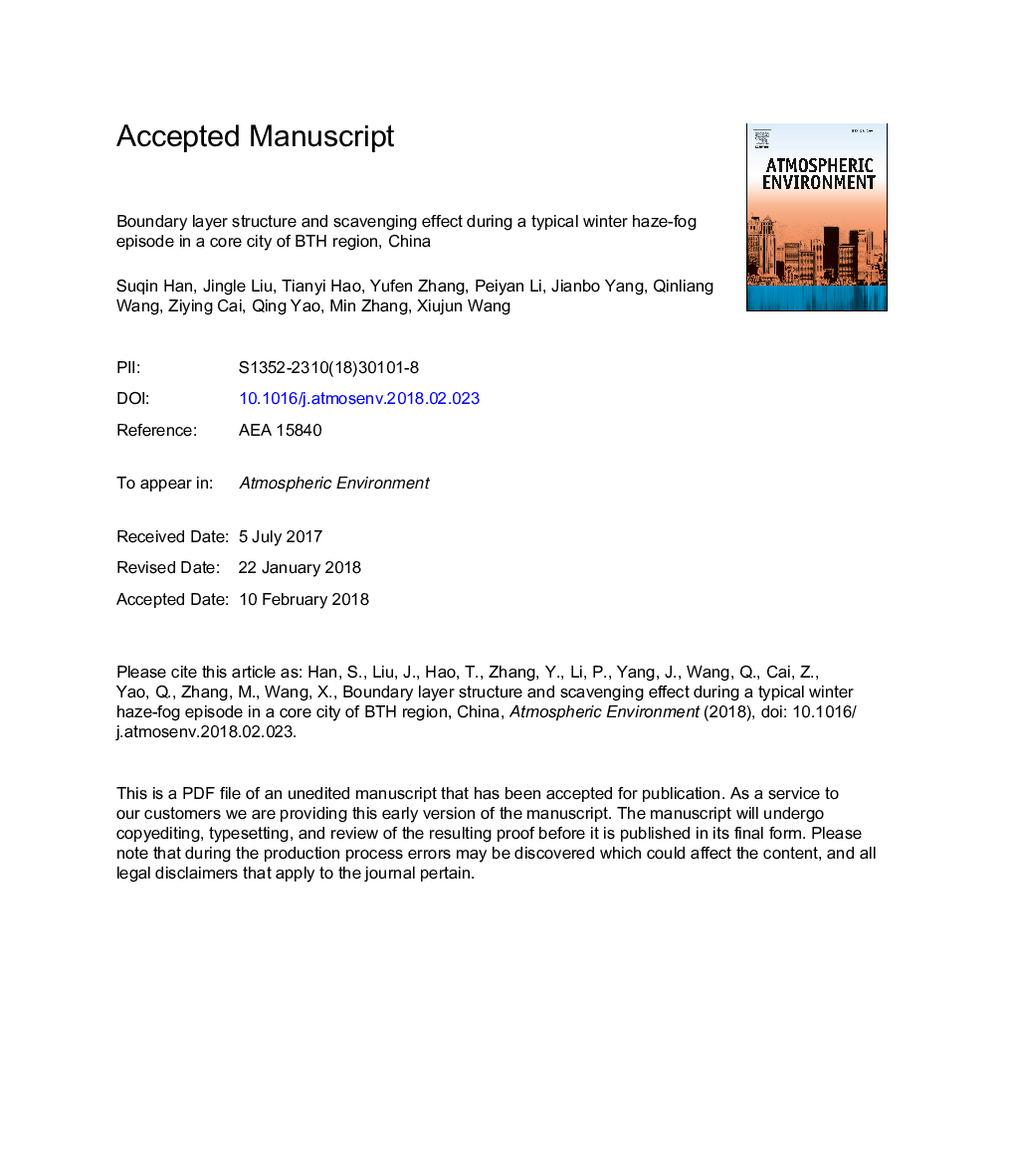| Article ID | Journal | Published Year | Pages | File Type |
|---|---|---|---|---|
| 8863966 | Atmospheric Environment | 2018 | 37 Pages |
Abstract
The vertical distribution of PM2.5 and meteorological parameters from ground to upper levels were observed simultaneously using meteorological tower, tethered balloons and aerosol laser radar in Dec of 2016 in the urban area of Tianjin and its southern district, Jinghai. The influence of the vertical structure of boundary layer on a typical haze-fog episode was analyzed. There existed long distance transport of PM in the high layers before the haze formed in Tianjin and the downward airflows brought the PM from the high layer to the ground. In the early stages of this episode, periodic temperature inversions occurred, leading to conspicuous diurnal variations in the vertical profile of the PM2.5. In the middle and late stages of this episode, strong inversion and thick humidity layer were sustained below 400â¯m, and there were no big daily changes in the vertical profiles of the PM2.5. During the rapid formation period of the fog, the inversion layer was damaged and turbulence was strengthened. During the stationary phase of the fog process, wind and turbulence in the boundary layer became weak again. Rime was the main weather-related, wet cleaning mechanism that lowered pollutants concentration during this fog episode. High concentrations of water soluble ions in the rime samples and the concentrations of those ions in ambient PM2.5 appeared significant decrease during the rime period, which illustrated the scavenging effect of rime.
Related Topics
Physical Sciences and Engineering
Earth and Planetary Sciences
Atmospheric Science
Authors
Suqin Han, Jingle Liu, Tianyi Hao, Yufen Zhang, Peiyan Li, Jianbo Yang, Qinliang Wang, Ziying Cai, Qing Yao, Min Zhang, Xiujun Wang,
